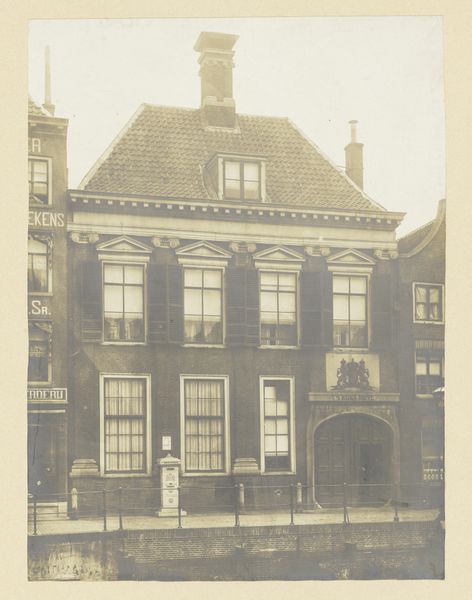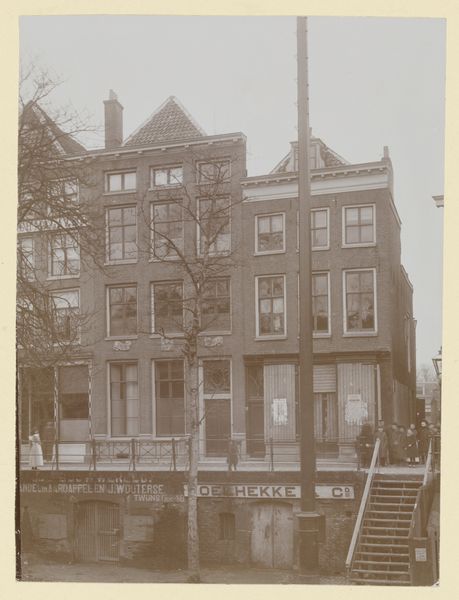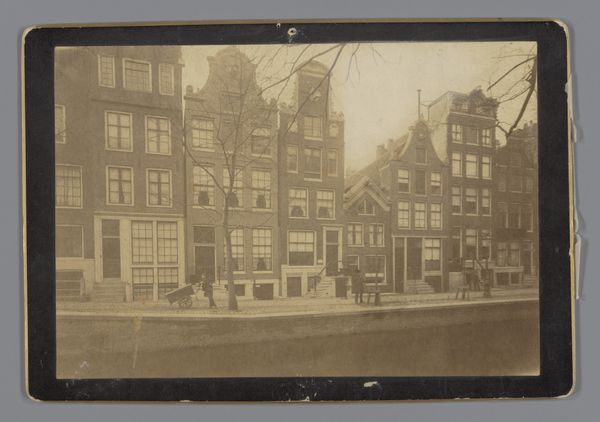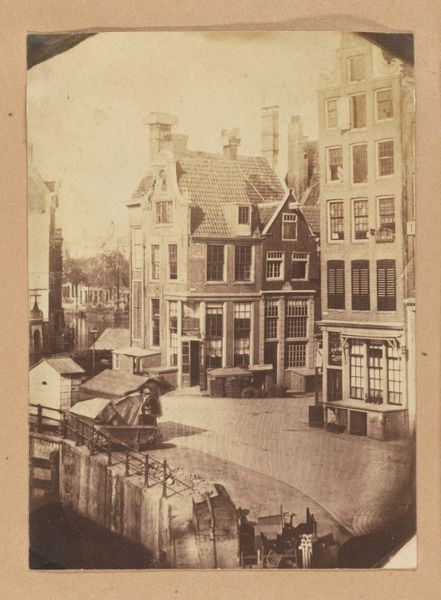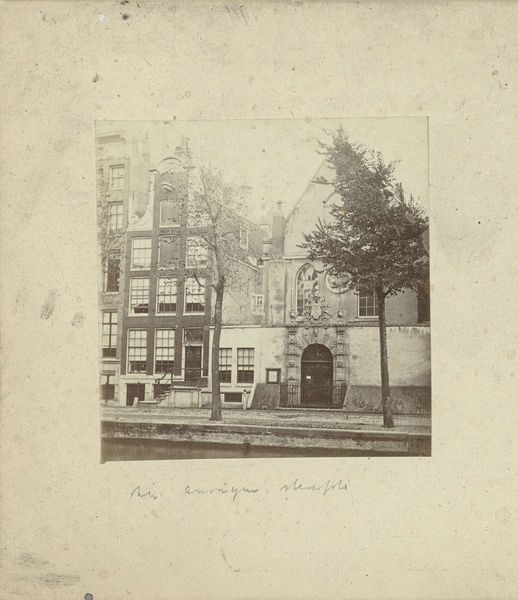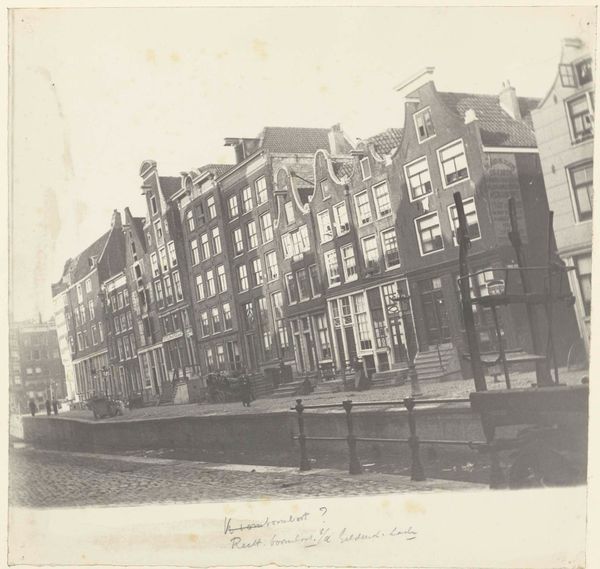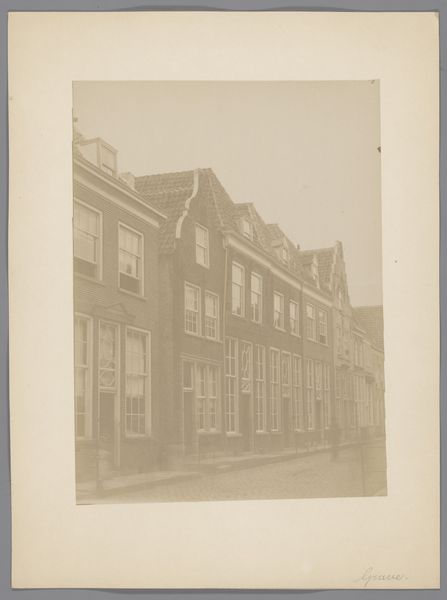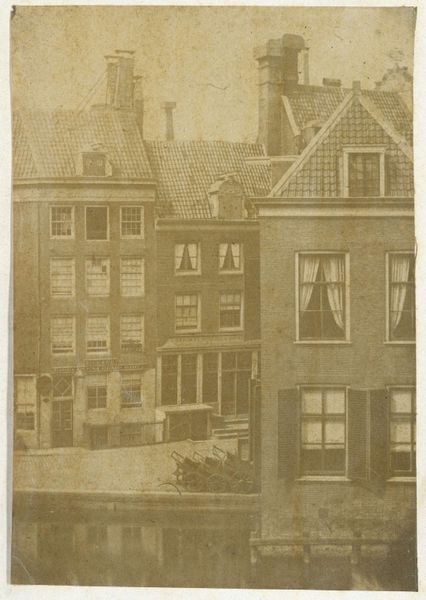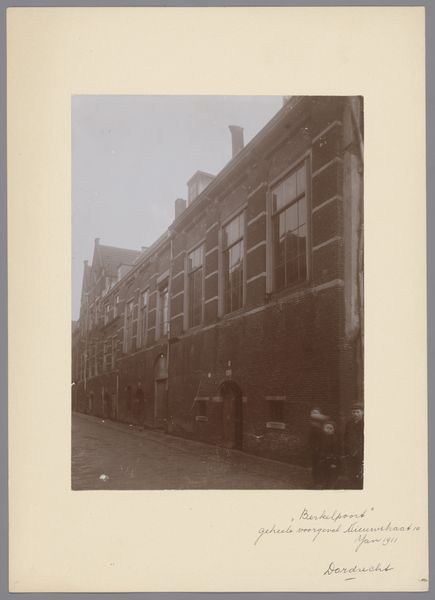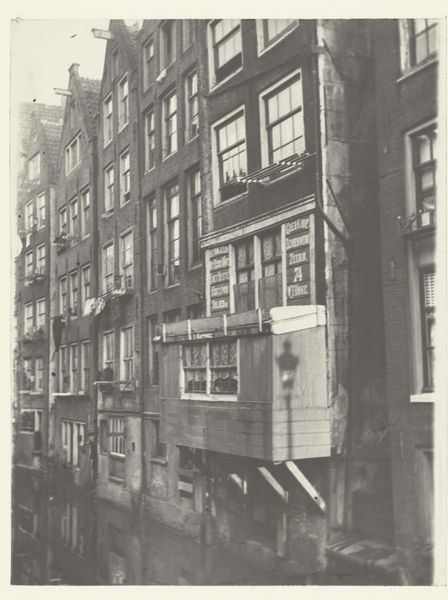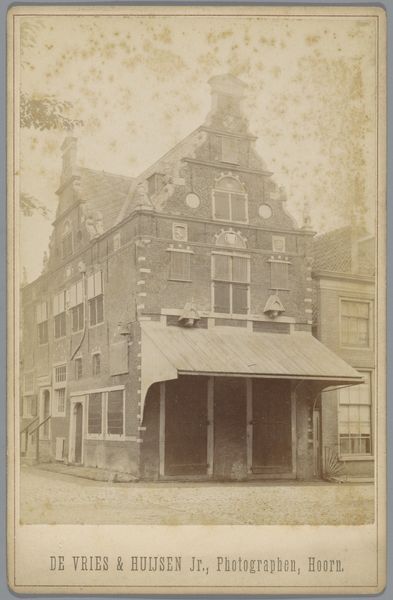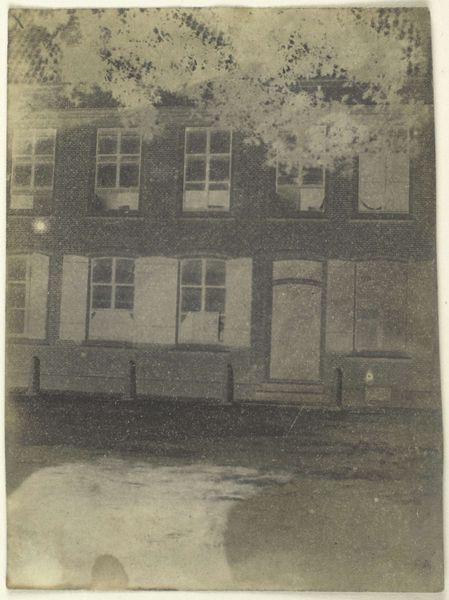
photography
#
dutch-golden-age
#
street-photography
#
photography
#
cityscape
Dimensions: height 168 mm, width 129 mm
Copyright: Rijks Museum: Open Domain
Curator: Allow me to introduce Eduard Isaac Asser’s “View of the Grote Houtstraat in Haarlem,” a photograph taken around 1847. It’s one of the earliest cityscapes in the Rijksmuseum’s collection. Editor: It’s so incredibly…still. Ghostly, even. Those shuttered windows and muted tones give the scene a kind of solemn silence. The only sign of activity is the suggestion of that horse and cart, like echoes in a dream. Curator: Indeed, that stillness is partly down to the long exposure times of early photography. But consider the artistry here – Asser carefully selects a view where the buildings themselves become the main actors, showcasing Haarlem’s urban landscape. Editor: The focus on architecture almost makes it feel like a record, an inventory. You can see the brickwork, the window frames, the texture of the street. He really allows the materials to speak for themselves. Was this meant to be documentary, do you think? Or was Asser making some sort of statement about Dutch society and labor by showcasing the setting? Curator: I think it goes beyond mere documentation. There’s a delicate, almost melancholic beauty to how the light falls on those buildings, turning the ordinary into something profound. It's like he’s asking us to slow down and really *see* the spaces we inhabit. You know? Editor: The material processes inform how people use space in the work, and there’s this whole story being implied. If there were no roads or buildings, you know, these people could not conduct this type of life! Also, if these shuttered window homes weren't produced by carpenters or laborers, it would be like the town was camping outside with nowhere to rest. Curator: So beautifully said. The camera's ability to record reality becomes a kind of alchemy, transforming stone and wood into poetry, labor into an atmospheric space. I wonder if people ever imagine being alive back then... I am often lost for time contemplating, thinking about where I am, versus being elsewhere! I think it could do a lot for me in life. Editor: Yes, so by focusing on its creation, Asser inadvertently highlights the structures that uphold—literally and figuratively—Dutch society at the time. Fascinating that this "photographic alchemy" you spoke of now exists for modern contemplation. Curator: Precisely. I will never look at a photograph or building the same again. Editor: I couldn't agree more. It encourages us to seek deeper understanding in any artwork, like Asser’s vision of a Haarlem street.
Comments
No comments
Be the first to comment and join the conversation on the ultimate creative platform.
